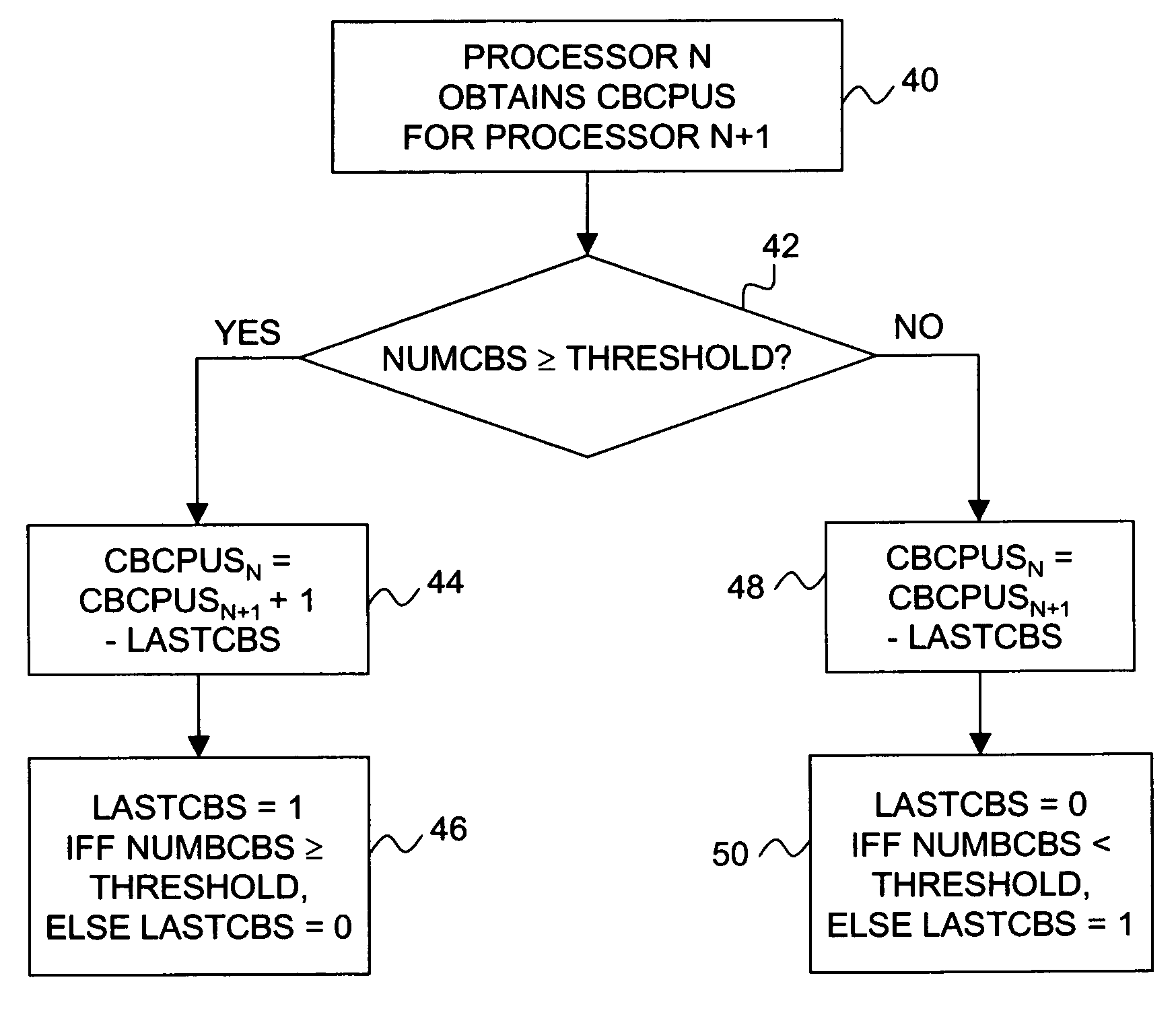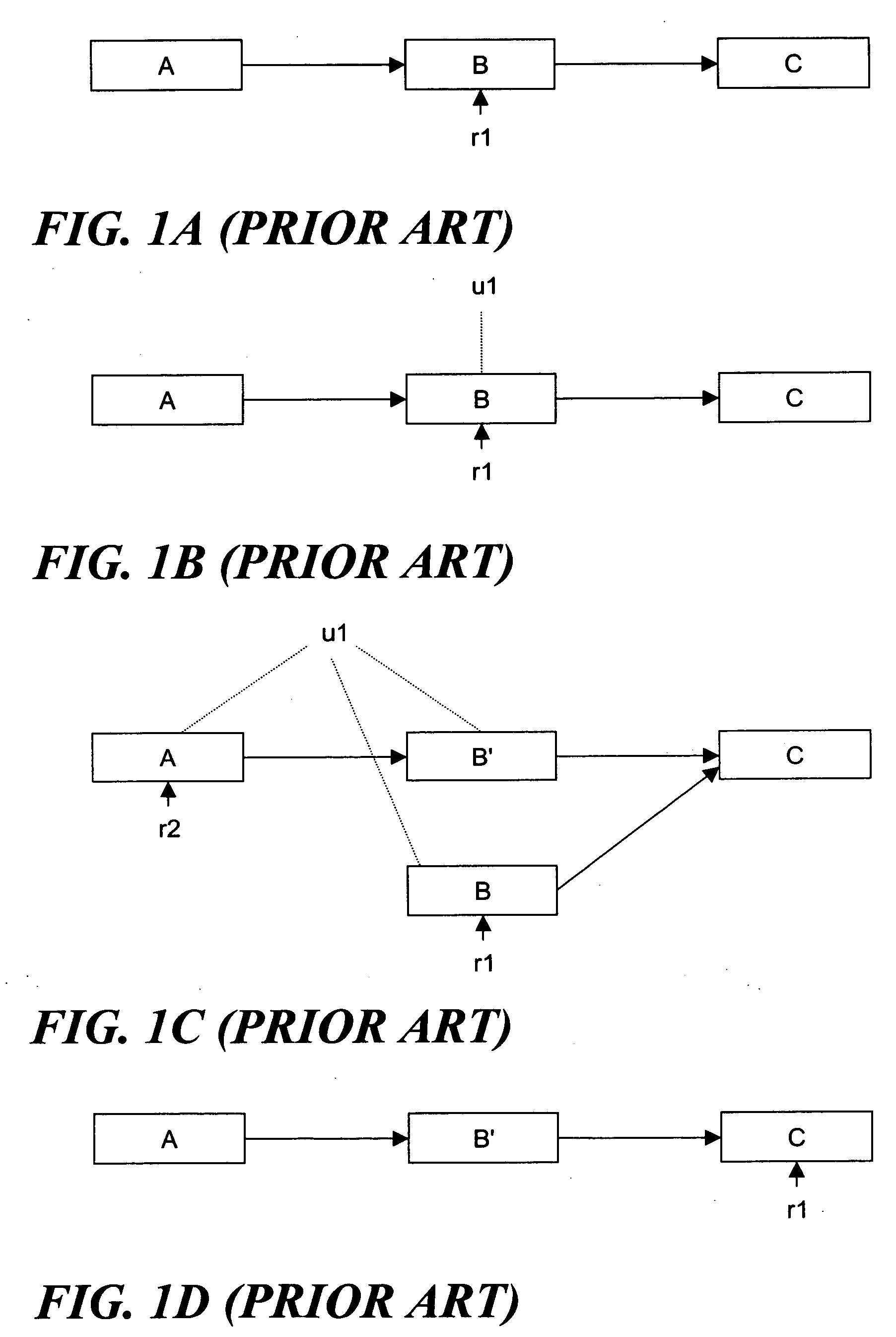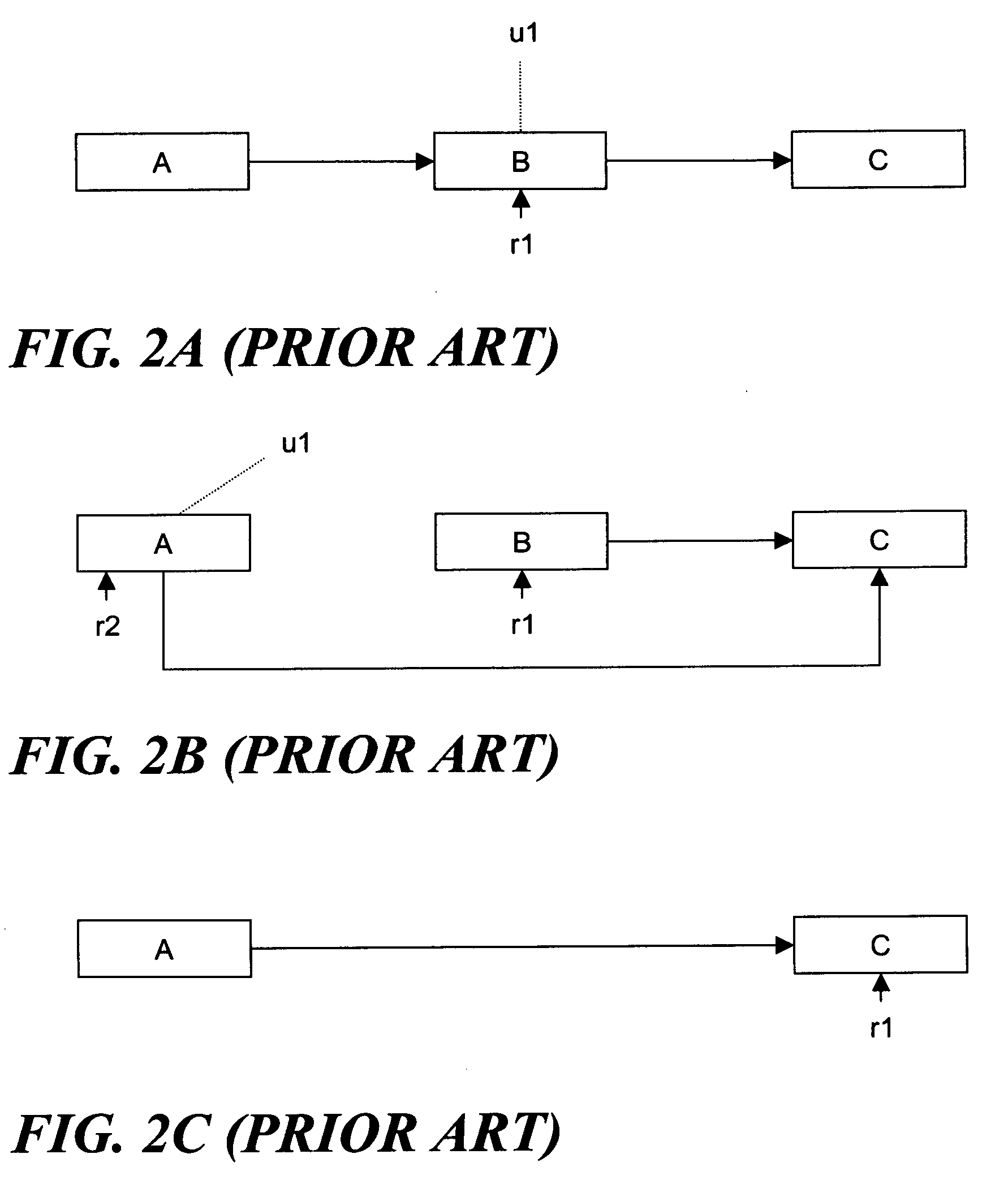Read-copy update grace period detection without atomic instructions that gracefully handles large numbers of processors
- Summary
- Abstract
- Description
- Claims
- Application Information
AI Technical Summary
Benefits of technology
Problems solved by technology
Method used
Image
Examples
second embodiment
[0048] In the invention, the distributed callback indicator 32 is implemented to track an indication of the total number of pending callbacks. In that case, the distributed callback indicator 32 can be thought of as a callback counter. To manipulate this counter, a processor compares the number of local callbacks that have been registered since this processor's last grace period to the number of local callbacks that were registered the last time the grace period token left the processor. The current processor's counter is set to the value of a neighbor processor's counter with an adjustment to reflect the net gain or loss of local callbacks.
third embodiment
[0049] In the invention, the distributed callback indicator 32 is implemented as a bitmap identifying processors that have pending callbacks. To manipulate the bitmap, a processor determines if there are a requisite number of local callbacks that have been registered since the last time the grace period token left this processor. If there are, the current processor's bitmap is set to correspond to a neighbor processor's bitmap, but with the current processor's bit set to 1. Otherwise, if a requisite number of local callbacks have not been registered since the last grace period, the current processor bit value in the bit map is set to zero. One disadvantage of this implementation is that it does not gracefully handle large numbers of processors due to need to process correspondingly large bitmaps.
[0050]FIG. 9 illustrates an exemplary sequence of processing steps that may be performed according to the first above-described embodiment in which the distributed callback indicator 32 is, ...
PUM
 Login to View More
Login to View More Abstract
Description
Claims
Application Information
 Login to View More
Login to View More - R&D
- Intellectual Property
- Life Sciences
- Materials
- Tech Scout
- Unparalleled Data Quality
- Higher Quality Content
- 60% Fewer Hallucinations
Browse by: Latest US Patents, China's latest patents, Technical Efficacy Thesaurus, Application Domain, Technology Topic, Popular Technical Reports.
© 2025 PatSnap. All rights reserved.Legal|Privacy policy|Modern Slavery Act Transparency Statement|Sitemap|About US| Contact US: help@patsnap.com



